#biggest caterpillar CAT dozer moving back...credit to : glc509
Feature Stories
Evolution of the Dozer
This year we celebrate the 75th anniversary of the Cat® dozer blade. Some say it may be the ultimate part provided by Caterpillar to its customers.
Yep, the dozer part. The term “dozer” originally referred to a steel plate and an operating mechanism attached to the front of track-type tractors. Today, the term also refers to the rugged machines built for tough jobs pushing dirt.
Hear the story of the dozer – from blade to machine – and find out why it’s a fan favorite.
AN ORIGIN STORY BURIED IN THE PAST
The origin of the dozer blade is buried in the past as deeply as the origin of the wheel. But even as late as the 1800s, dozer blades were crude by any standards. They were made of wood and affixed to the front end of a pole that was pulled by horses or oxen. Their main purpose was to spread loose dirt out over a fill as it accumulated.
In 1914 the Holt Manufacturing Company, one of Caterpillar’s predecessor companies, introduced a dozer blade in front of the machine that was controlled by a rope windlass fastened to the tractor’s main frame. They continued to make dozers in small quantities until they were discontinued after their merger with the C.L. Best Tractor Co. in 1925.
A LEGEND IS BORN
Before 1945, suppliers designed and sold earthmoving attachments designed specifically for Caterpillar tractors. In early 1945, Caterpillar began developing its own line of dozer blades that met Caterpillar specifications and quality standards. Dozer blades originally came in straight, angling, and "U" shapes, both cable- and hydraulically- controlled.
The first Caterpillar tractor with the new dozer blade left Peoria, Illinois, in 1945. Throughout 1945, engineers performed exhaustive tests on this new product at the company's proving grounds in Illinois and Arizona, and operators tested the attachments at various locations throughout the United States. The performance of experimental and first-production models gave assurance that these new items of earthmoving equipment would sustain and enhance the high reputation of Caterpillar products.
First shipments of Caterpillar track-type tractors with accompanying Caterpillar dozer blades were made later that year. The Caterpillar track-type tractor quickly became known as a “dozer” and the legend was born. These machines worked on some of the modern world’s greatest engineering projects, including the U.S. Interstate Highway System, the Three Gorges Dam in China, and the widening of the Panama Canal, just to name a few.
OPERATOR IN MIND FROM LIFT UP TO REMOTE CONTROL
Another big change in dozers… how the operator uses the controls. It started with cable controls that could only lift up, then hydraulic controls came along. These were easier to use and could lift up or push down. Eventually dozers progressed to having an onboard computer that could control the blade for the operator to produce a predetermined design. Today’s operators can use our latest Command for Dozing. It allows the operator to control the dozer remotely, from anywhere in the world.
TODAY’S DOZER
Whether the job is moving material or finish grading, there’s a Cat® dozer made for it — small, medium or large. Plus, with a big selection of undercarriage, drive train and blade configurations, customers can customize their new dozers to accommodate virtually any job requirements.
All about the Small (D1-D3). Quick to move from site to site, with the right combination of speed, power and accuracy, small Cat dozers are versatile construction workhorses. Don’t let the size fool you. Plus, the new GRADE technology has really made the small dozer valuable on the jobsite!
Major features with the Medium (D4-D7). Medium Cat dozers deliver industry-leading fuel efficiency and easy maintenance features that reduce owning and operating costs. Next Generation models include factory-integrated Cat Grade technology; plus, you’ll find the industry’s first high-drive electric drive in this size class. Another major feature? Versatility. The choice in powertrain and dozer blade configurations allows customers to tailor the machine to the application, whether it’s a large fine-grading job to bulk earthmoving.
A lot to love with the Large (D8-D11). Large Cat dozers are built to take on the world’s most demanding work. Elevated sprockets increase productivity, simplify maintenance, reduce downtime and raise final drives and powertrain components out of tough underfoot.
One other feature of today’s dozer? Cat® Command for dozing. This technology helps increase operator safety, comfort and productivity. Command for dozing makes remote operations and semi-autonomous operations of these machines possible.
Since Caterpillar began making dozer blades 75 years ago to today, there’s one thing that remains true: Dozers are reliable machines to get a lot of tough jobs done.
-
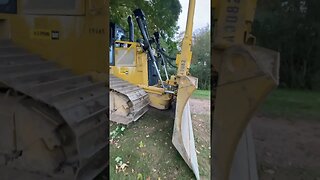 0:55
0:55
MikeOrazzi
8 months agoBig Caterpillar D6T XL dozer #dozer #bulldozer #heavyequipment #cat
2 -
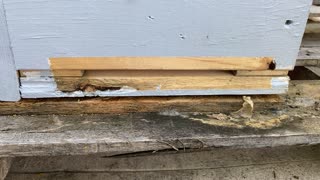 0:57
0:57
January's Bee Rescue
8 months agoPillar queen/cat carrier rescue doing well
14 -
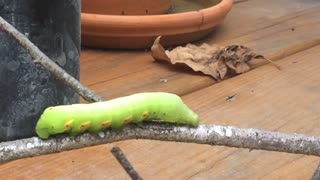 2:19
2:19
AmyH
5 years agoGiant Caterpillar
13 -
 9:13
9:13
Hardscaping & Landscaping Company
1 year agoCaterpillar DK3 LGP review | How To Operate A Caterpillar
8 -
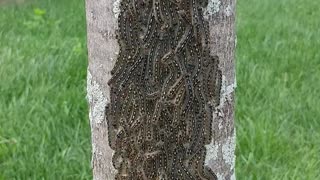 0:09
0:09
perianderson
6 years ago $5.57 earnedMassive caterpillar cluster on backyard tree
1.61K1 -
 0:23
0:23
DrTorta
10 months agoGiant Glowing Caterpillar at Beyond Wonderland 2023
2 -
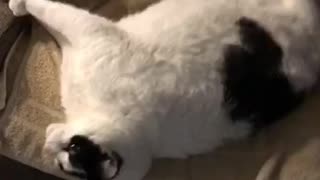 0:15
0:15
Jellybellyjack
6 years agoIs this the biggest cat you've ever seen?
2.53K -
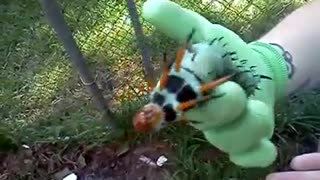 1:11
1:11
ViralHog
8 years ago $168.02 earnedThe Largest Caterpillar EVER
71.3K -
 0:15
0:15
englishbullterrierireland
2 years agoCaterpillar
14 -
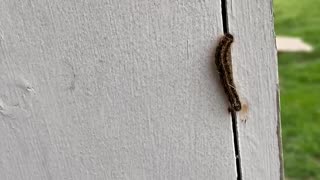 0:20
0:20
Family Friendly Gaming Streaming
1 year agoIt’s a caterpillar
3